SECTION ONE
Panel 4 illustrates Native life centered on the community.
California was a densely populated region prior to colonization. And it was a treasure chest of languages, one of the most linguistically diverse places on earth.

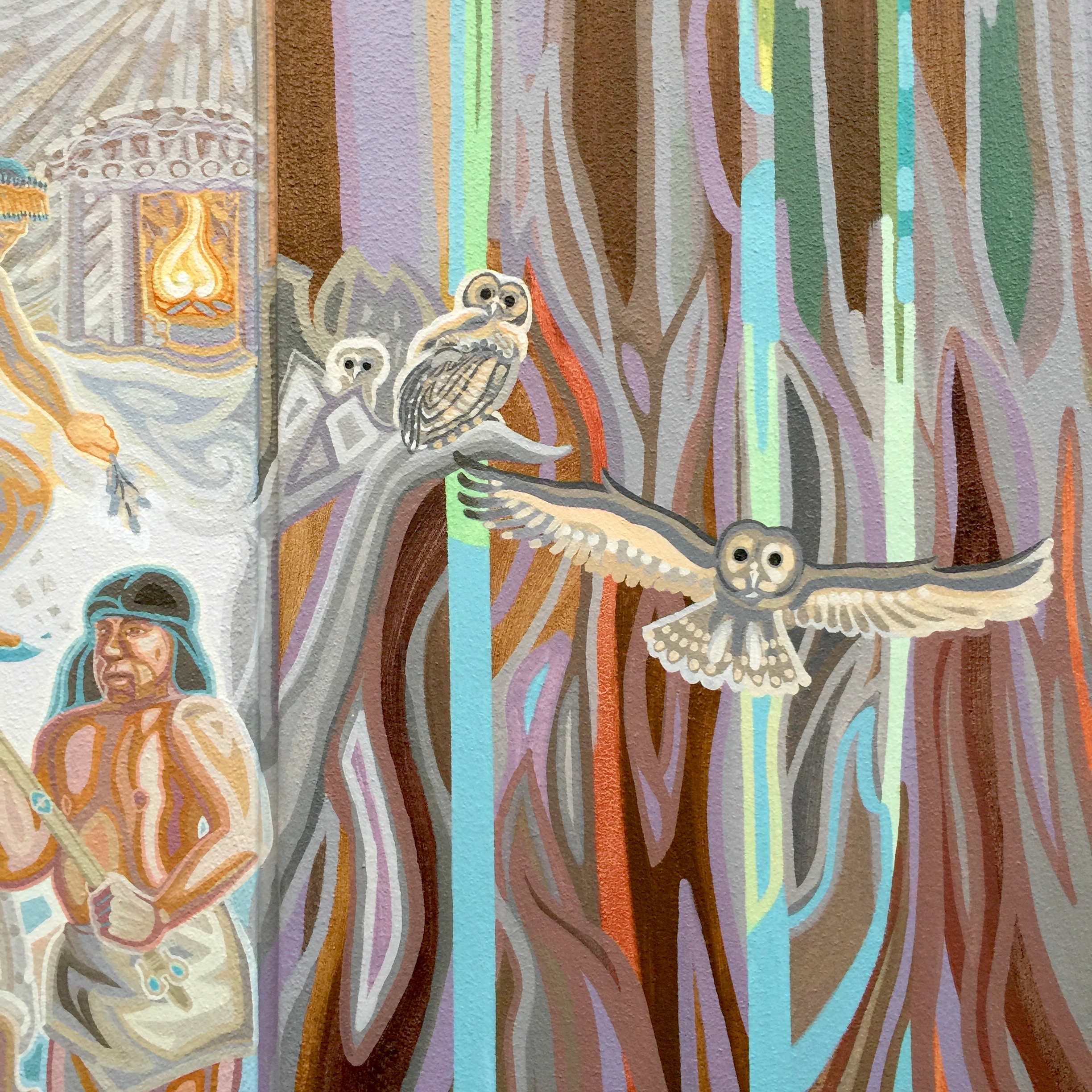
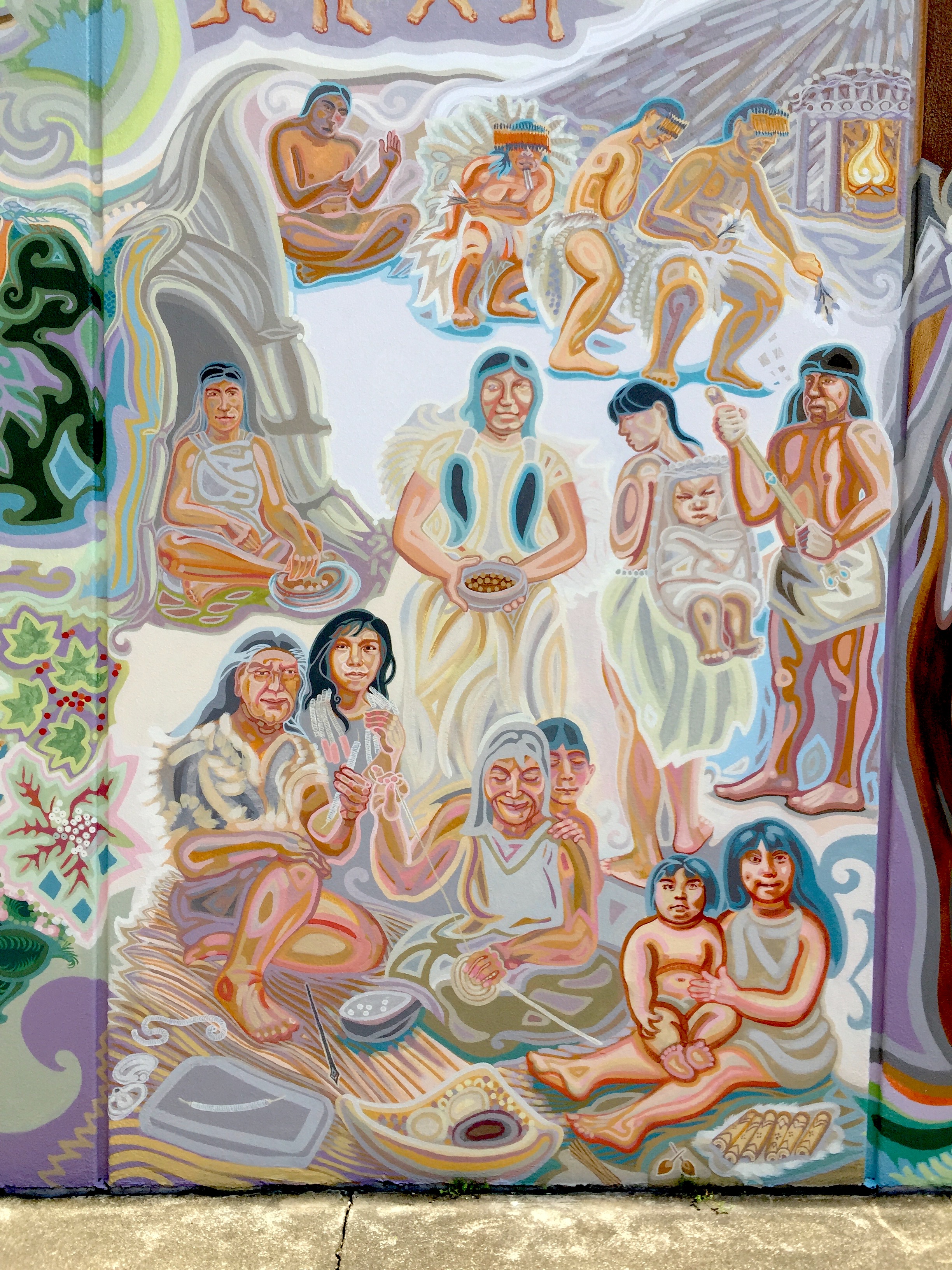
- Native people between the Arctic and Rio Grande spoke 300 different languages classified into 50 language families. By contrast, Europe’s languages are classified into three major families.
- California natives spoke some 100 different languages, classified into 5 language families.
- There were 60 major tribes in California and the Pomo are themselves divided into seven subgroups, each comprised of many bands, politically and economically autonomous communities but united by trade, marriage, and culture.
- The language diversity speaks of cultural depth, and of people separated by geography and staying in their homeland for hundreds and hundreds of years.
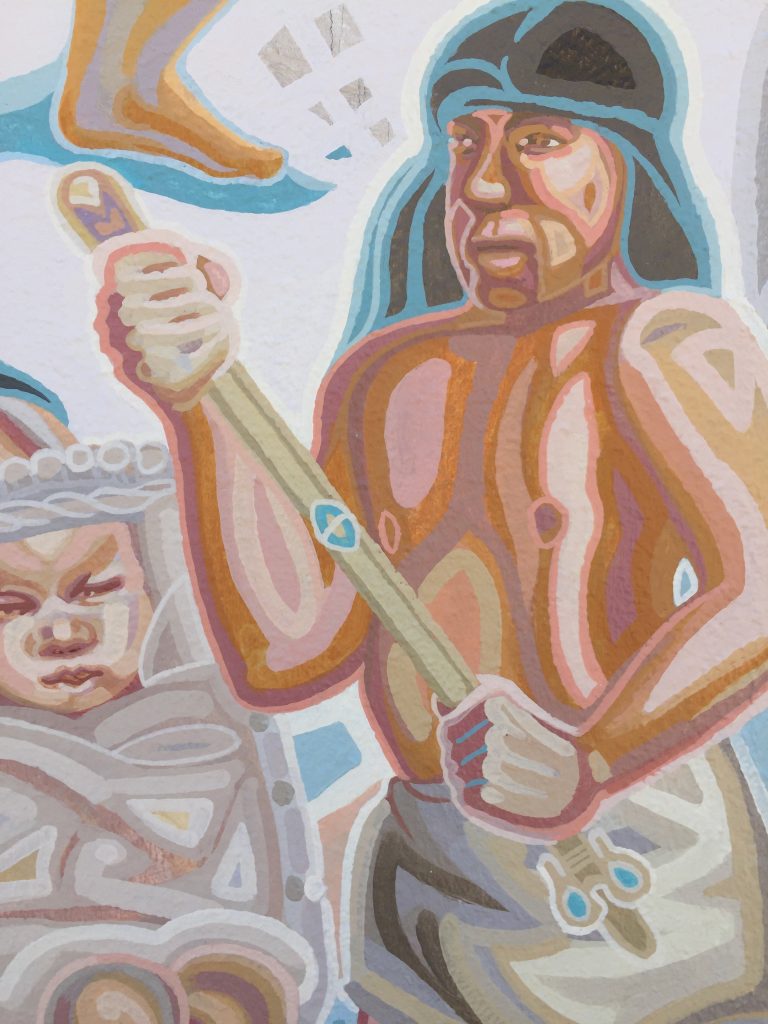
These tribes and bands were not without conflict, but warfare was not dominant in their lives. Later Europeans called them “peaceable and unaggressive.”
I would posit that in lands of such abundance they had better things to do than fight.
Ethnographic texts describe the Pomo as sedentary and affluent.
In other words, so rich in resources that they didn’t need to migrate with herds. They would make seasonal trips such as salmon runs on the coast, but settlements were permanent.
Left, detail in community of a man with an atlatl, a throwing stick that augments the force of one’s spear thrust.
Life centered on the community. The word is meaningful to all of us, through all periods, but I thought it was exemplified by the Native band, living and working together, delighting in their children, teaching them in all activities, honoring the wisdom and experience of elders, valuing generosity and the care of future generations.
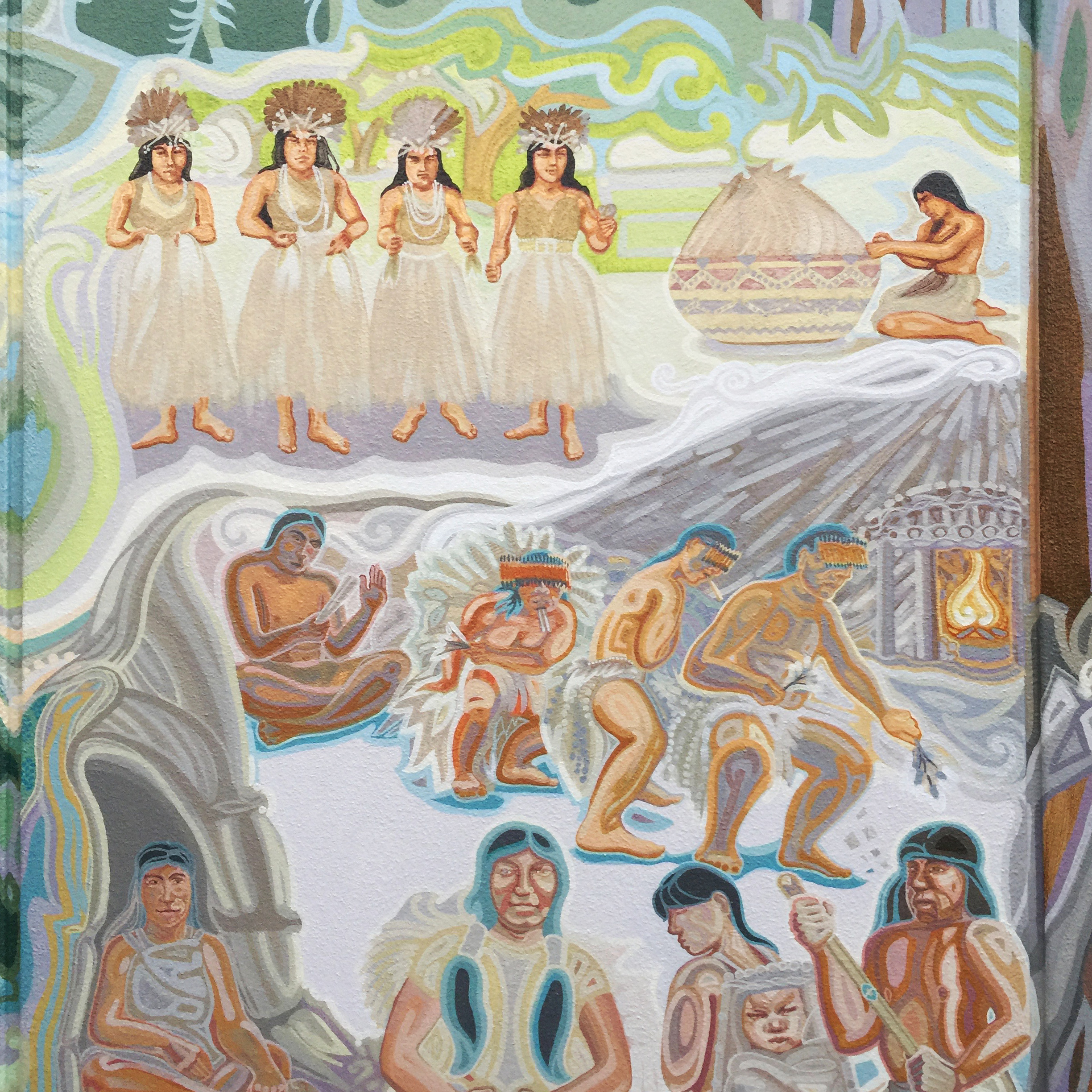
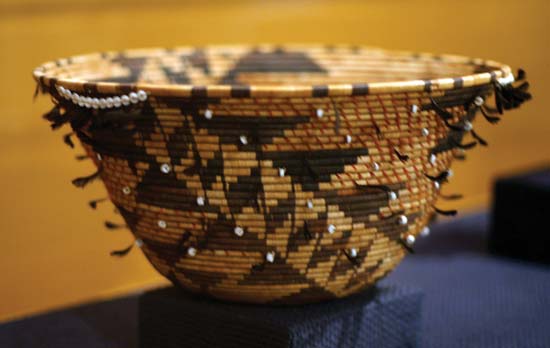
Basket weaving was an important skill. Foods were gathered, stored, and served in different baskets. Fish were caught, acorns gathered, soup was boiled in special baskets. The large basket above may have been made for acorn mush at a large gathering. Exquisite baskets decorated with hummingbird feathers were beautiful gifts for important occasions.
I sometimes was able to use contemporary people as models for long ago scenes:
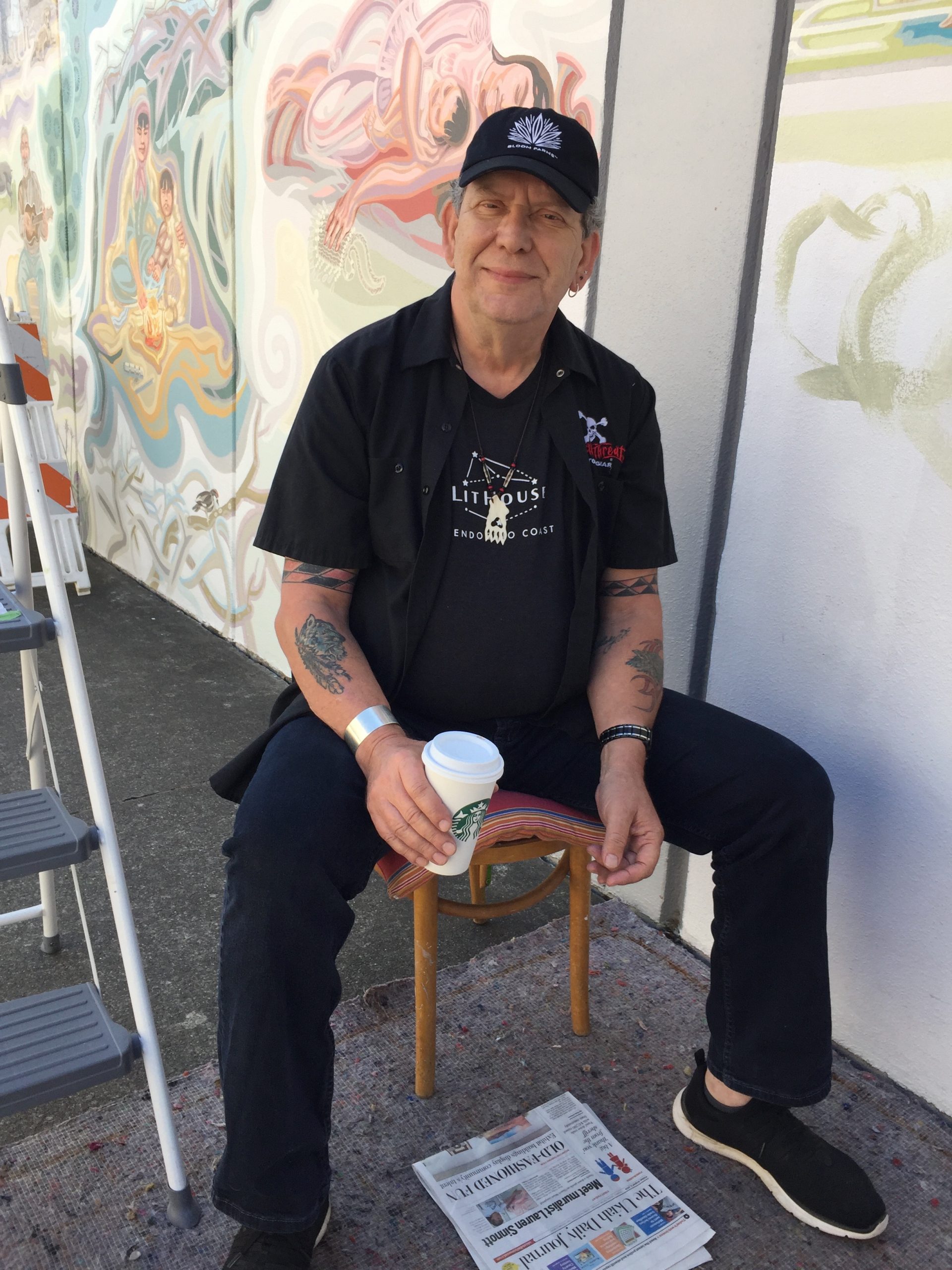


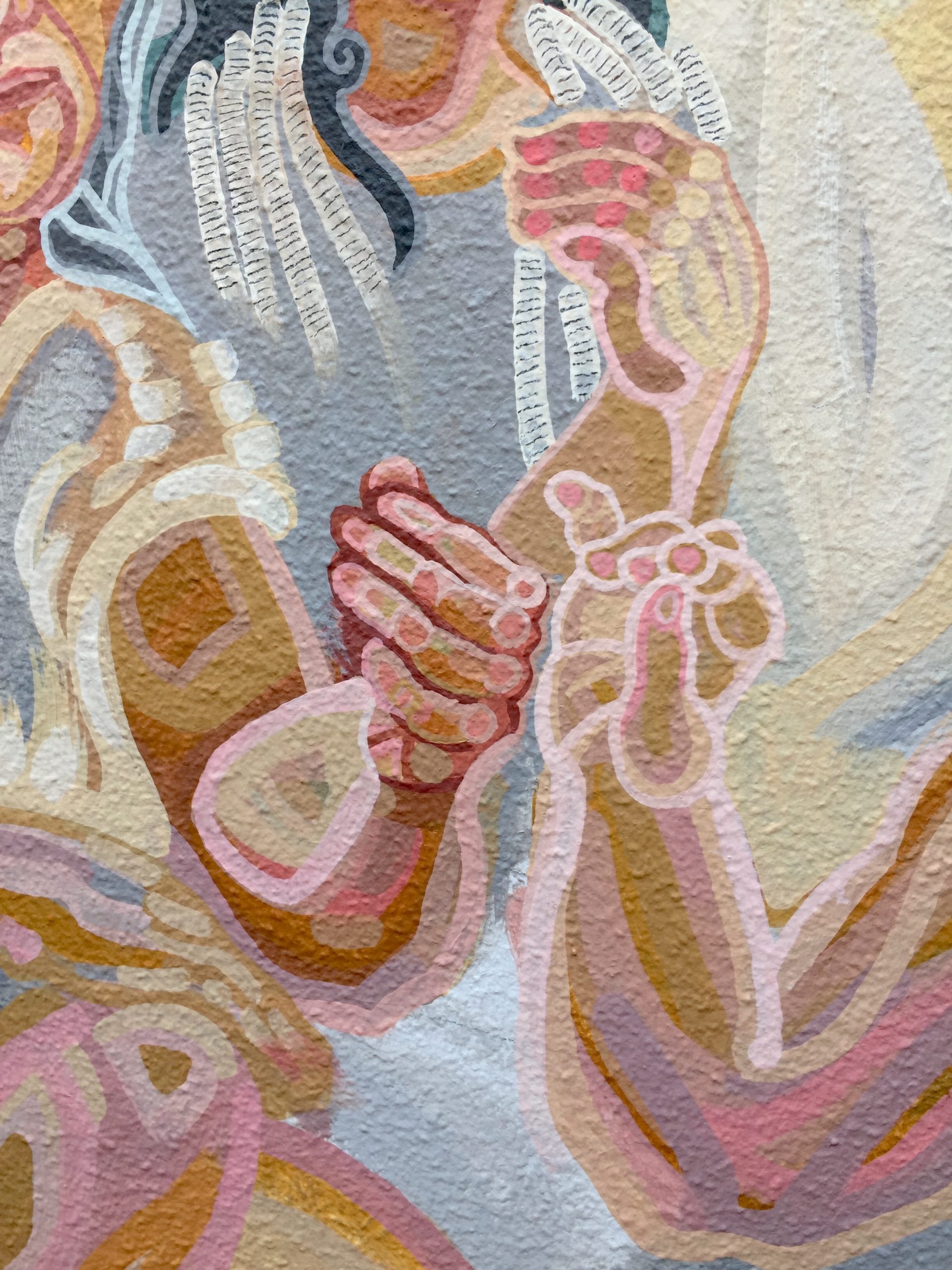
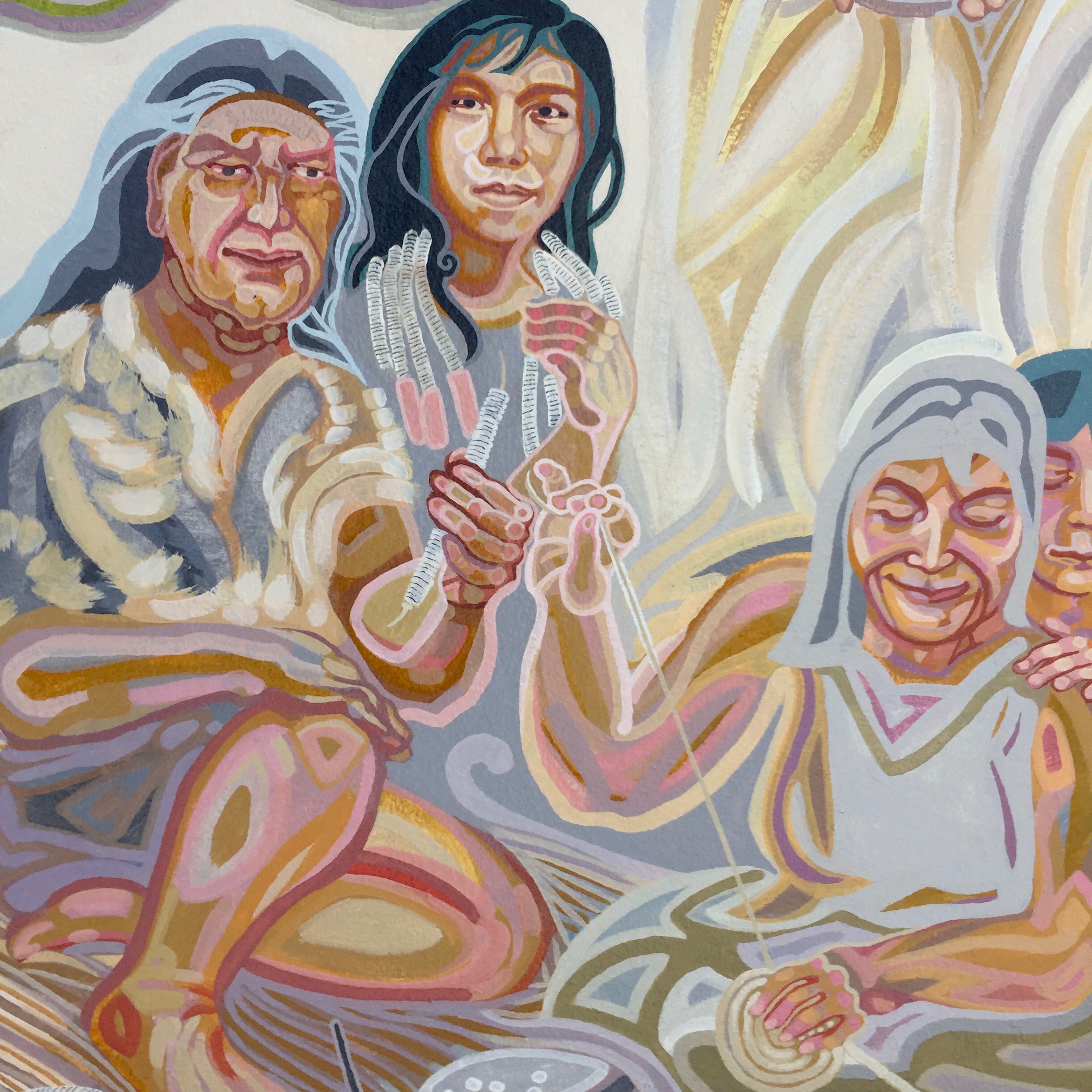
White Wolf modeled for the elder whose profession is to make the shell currency used by the Pomo for trading. That is what young Frances Jack is wearing: necklaces of money! Note that the renowned photographer Edward Curtis who took this photograph apparently did not record or know the name of his subject, but White Wolf did! He knew her later as an older woman, and therefore I can honor her by using her name.
Moreover, without knowing it, I had already painted a figure based on a photo of Frances’ own mother, Cecelia Joaquin! The seed beater in resourcefulness is a reverse image of Cecelia, seen younger and no longer in stifling western clothes:
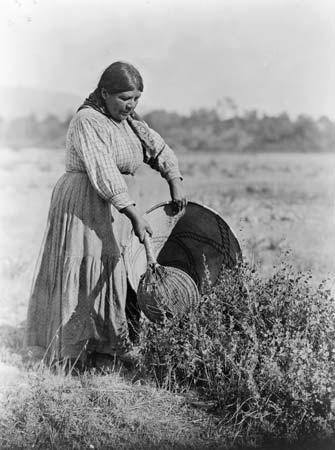
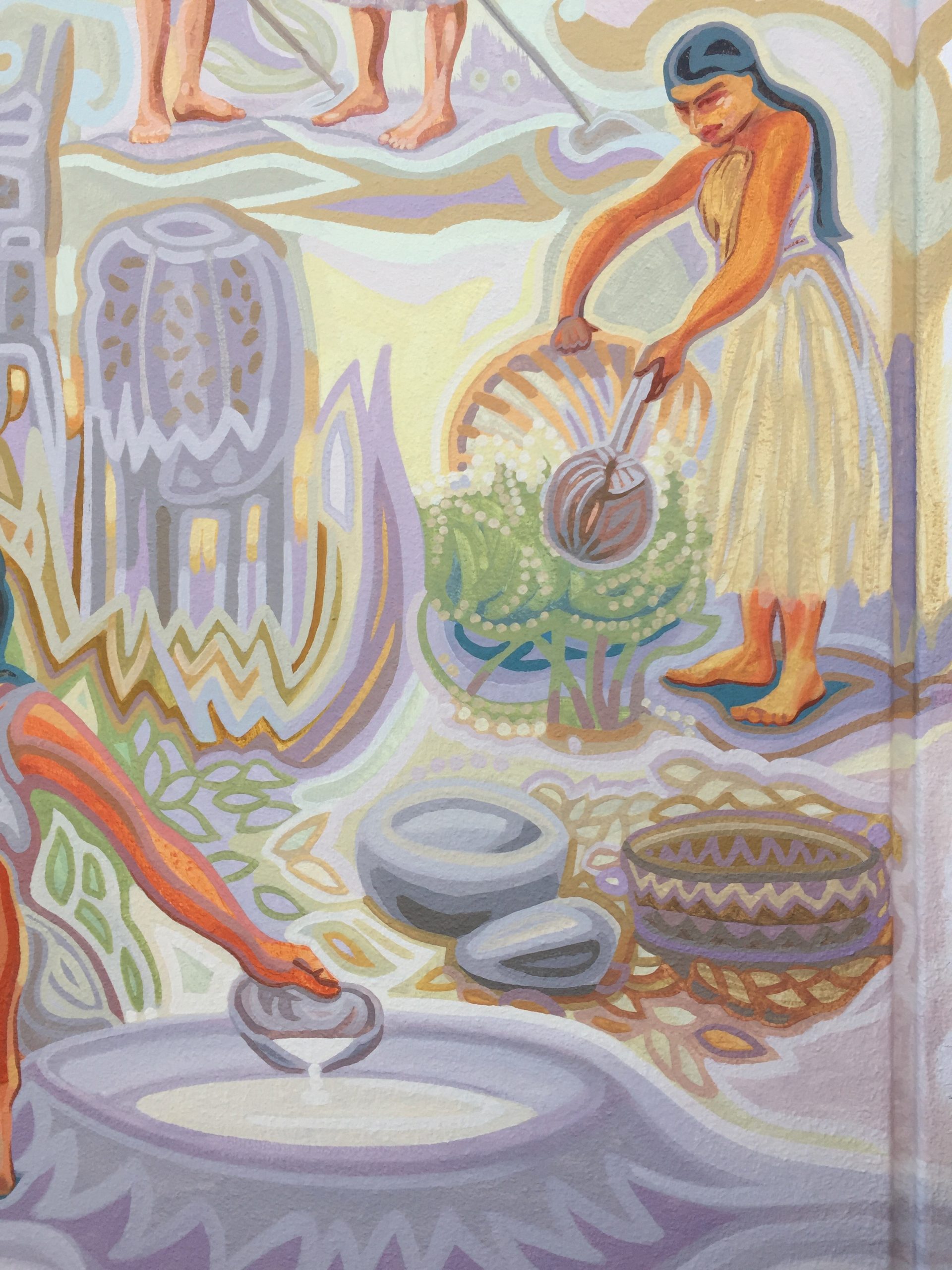

White Wolf is the elder money-maker. (yes, I aged him a lot!) He has his thick butter clam shells from Tomales Bay which will be broken into pieces. He will use his hand drill to make a hole in each, then thread them on wire grass and roll them together back and forth on a flat depressed rock to make them rounded and equal size (lower left).
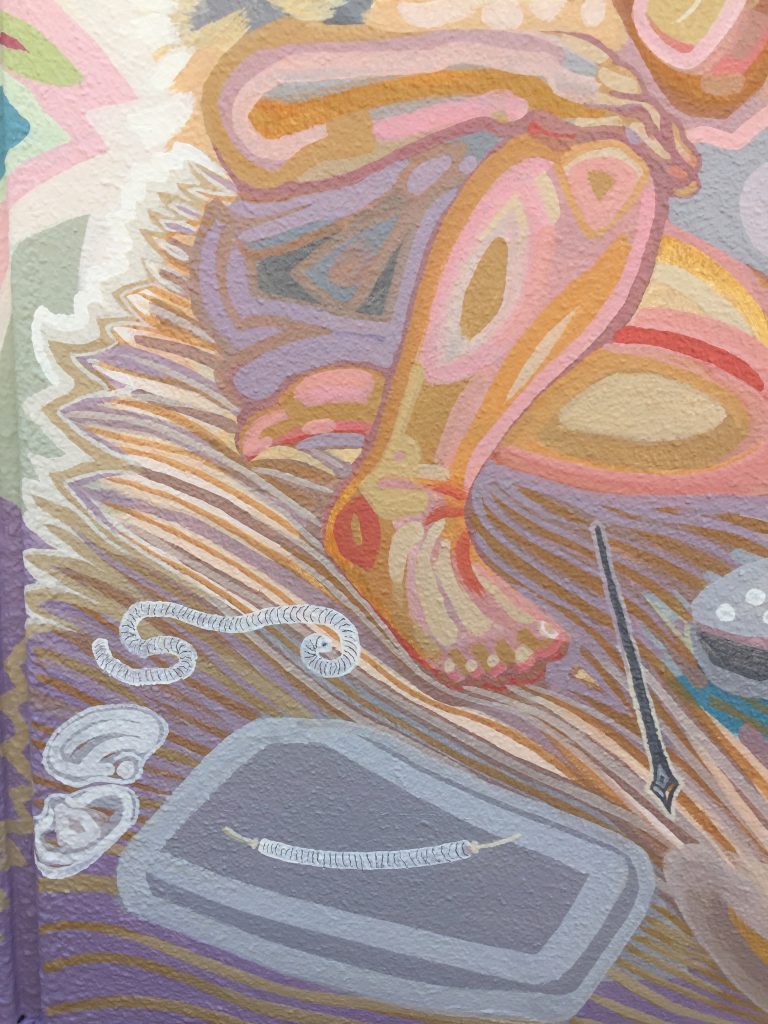
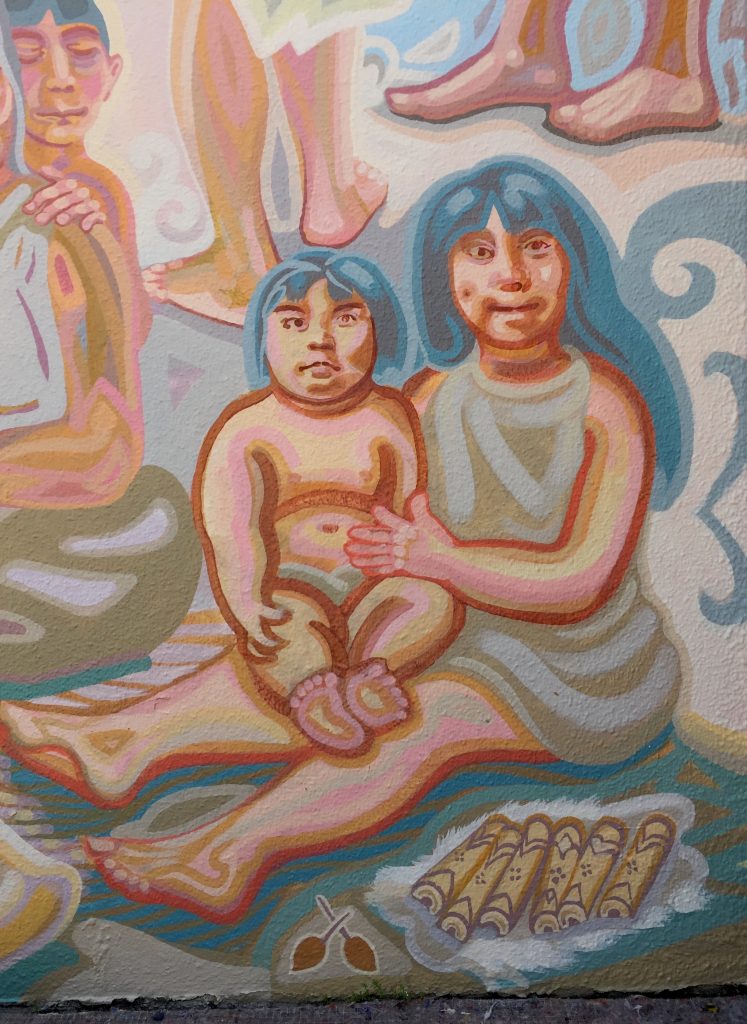
In the lower right you see a sister and her little brother with toys (acorn tops) and games (stick dice). Below see the real objects White Wolf lent me to use in the mural.
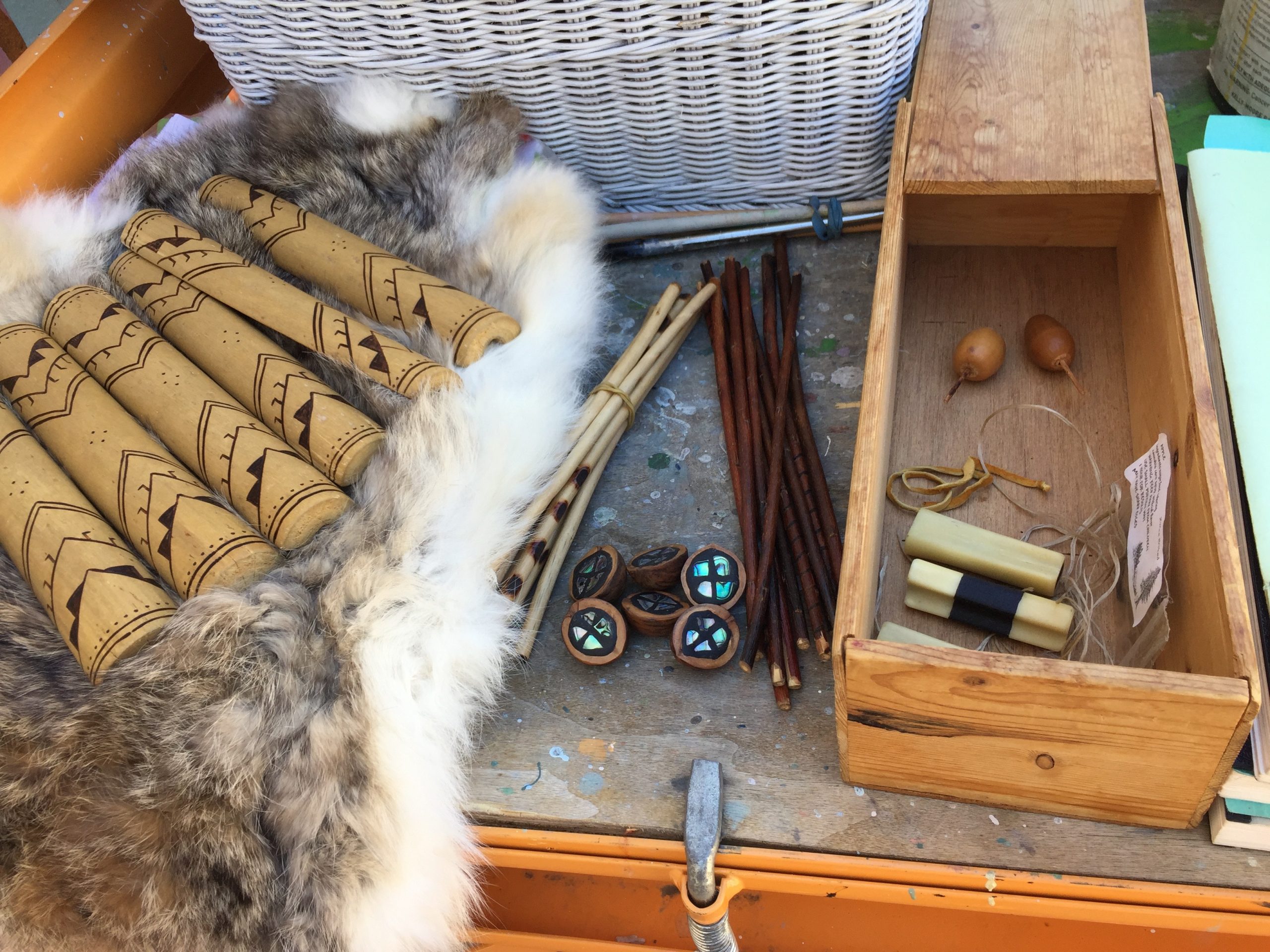
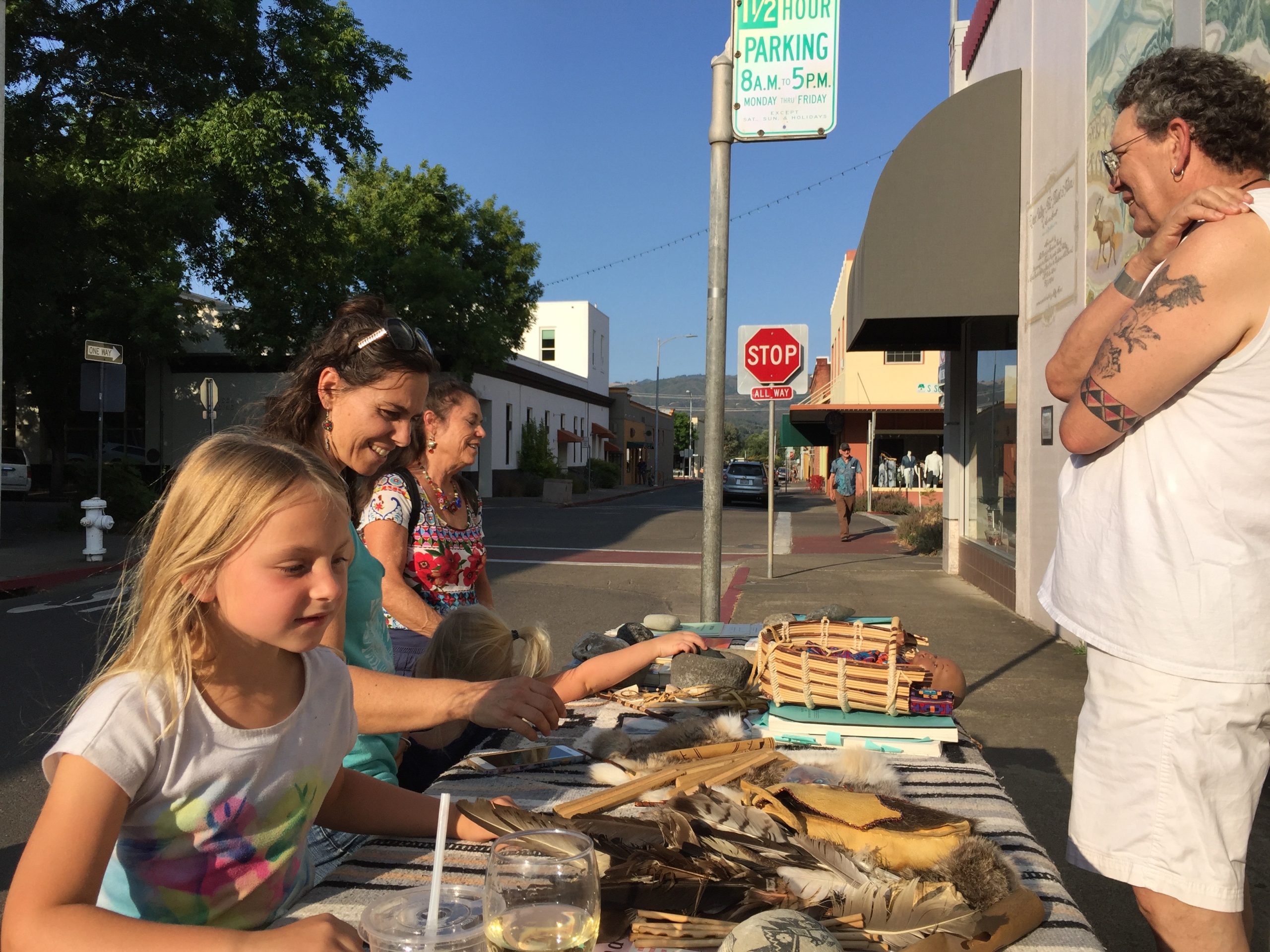
In the middle of the panel four women perform a ceremonial dance in traditional headdresses which are used today and skirts made of strips of soft inner bark. Below them, a musician with clappers creates the beat for three male dancers in front of a spiritual roundhouse. They have flicker feather masks and turkey feather ritual aprons.
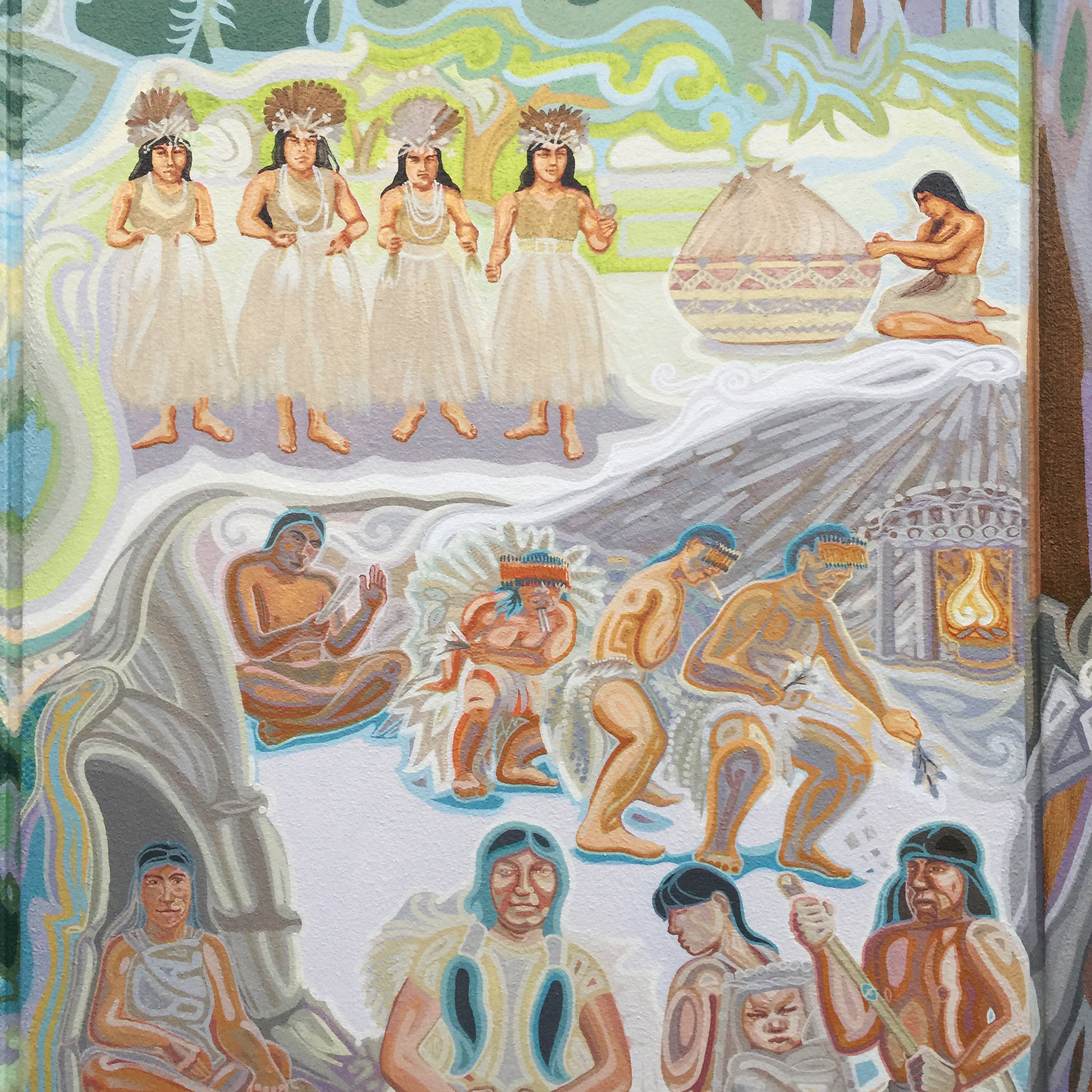
A sacred fire burns inside, the cleansing smoke pouring forth to bathe and unite the people above and below. Here are some source photos:


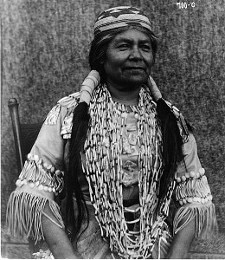

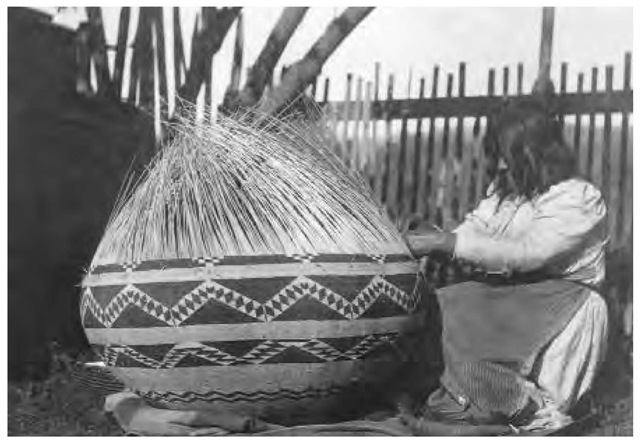
Below the dancers, a woman sits in a house made of rushes with her hand on an abalone shell.
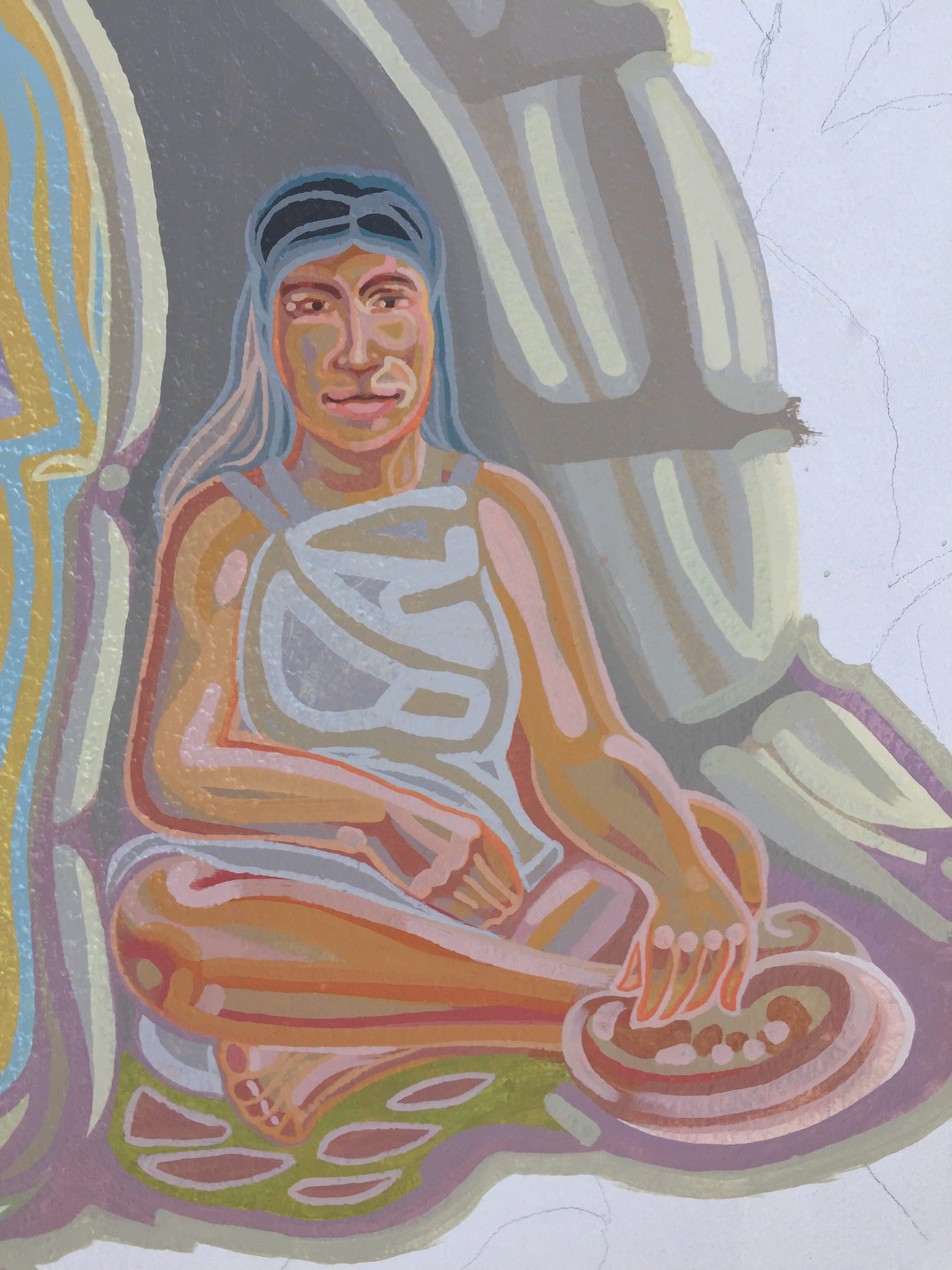
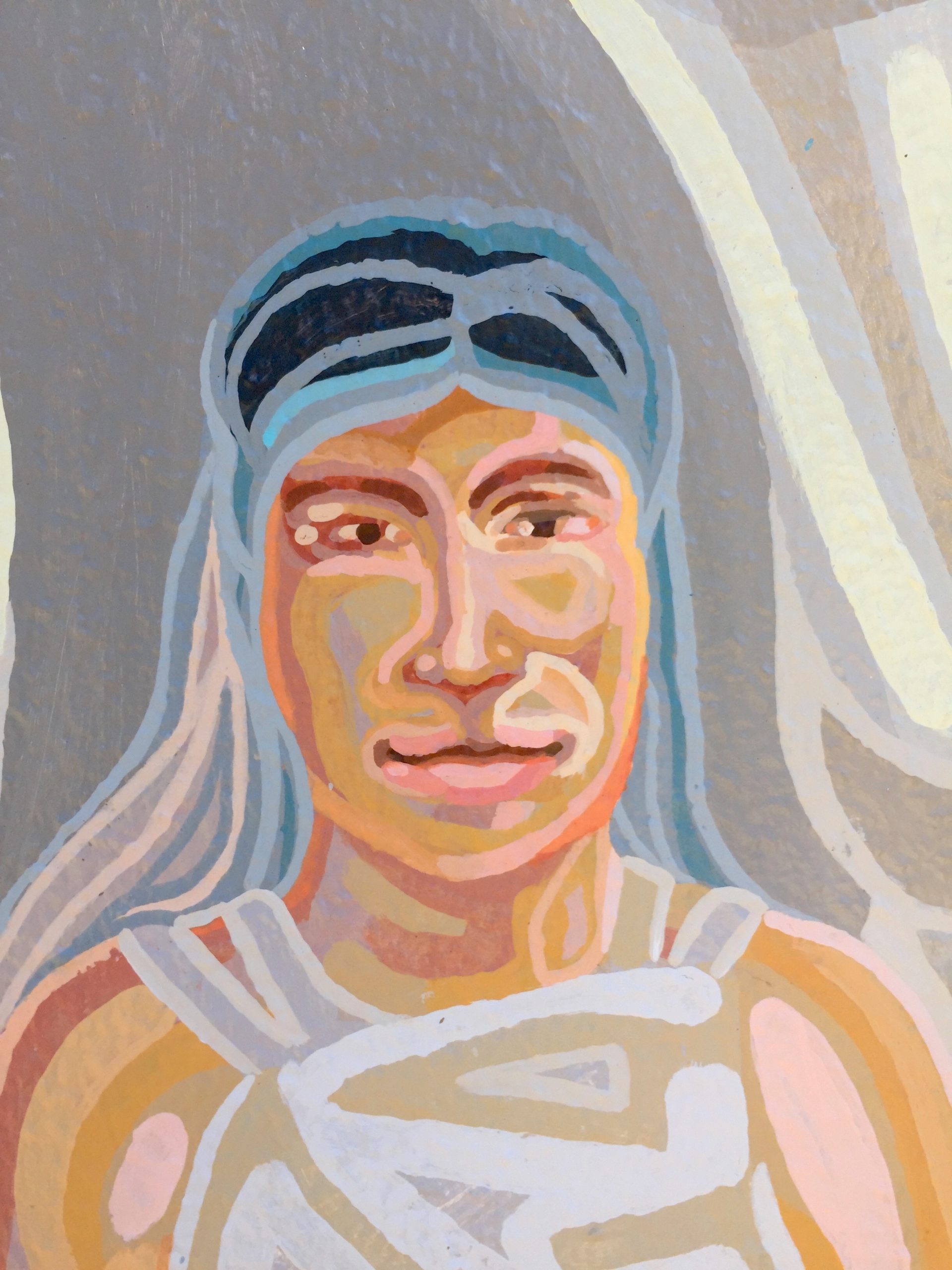
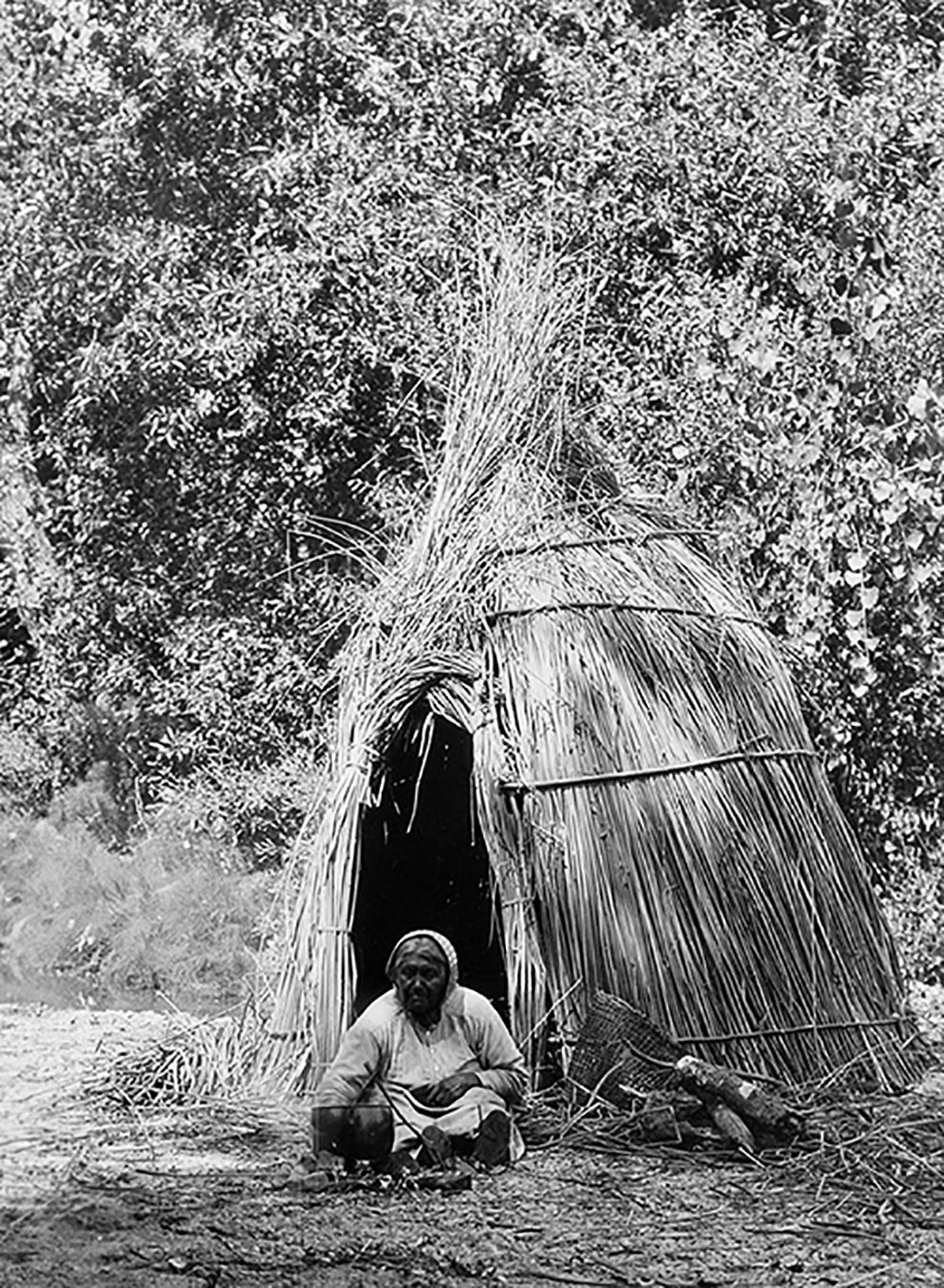

Another woman in her finest garments offers food (source photos above and below), a young mother carries her baby in a traditional Pomo cradle, and a man stands with his atlatl, an extremely functional tool for projecting darts and spears with more force than a bow. This scene of community has 20 people in it, the most of any until I painted panel 19 love, which has 21, plus a dog portrait! And then every subsequent panel had even more.
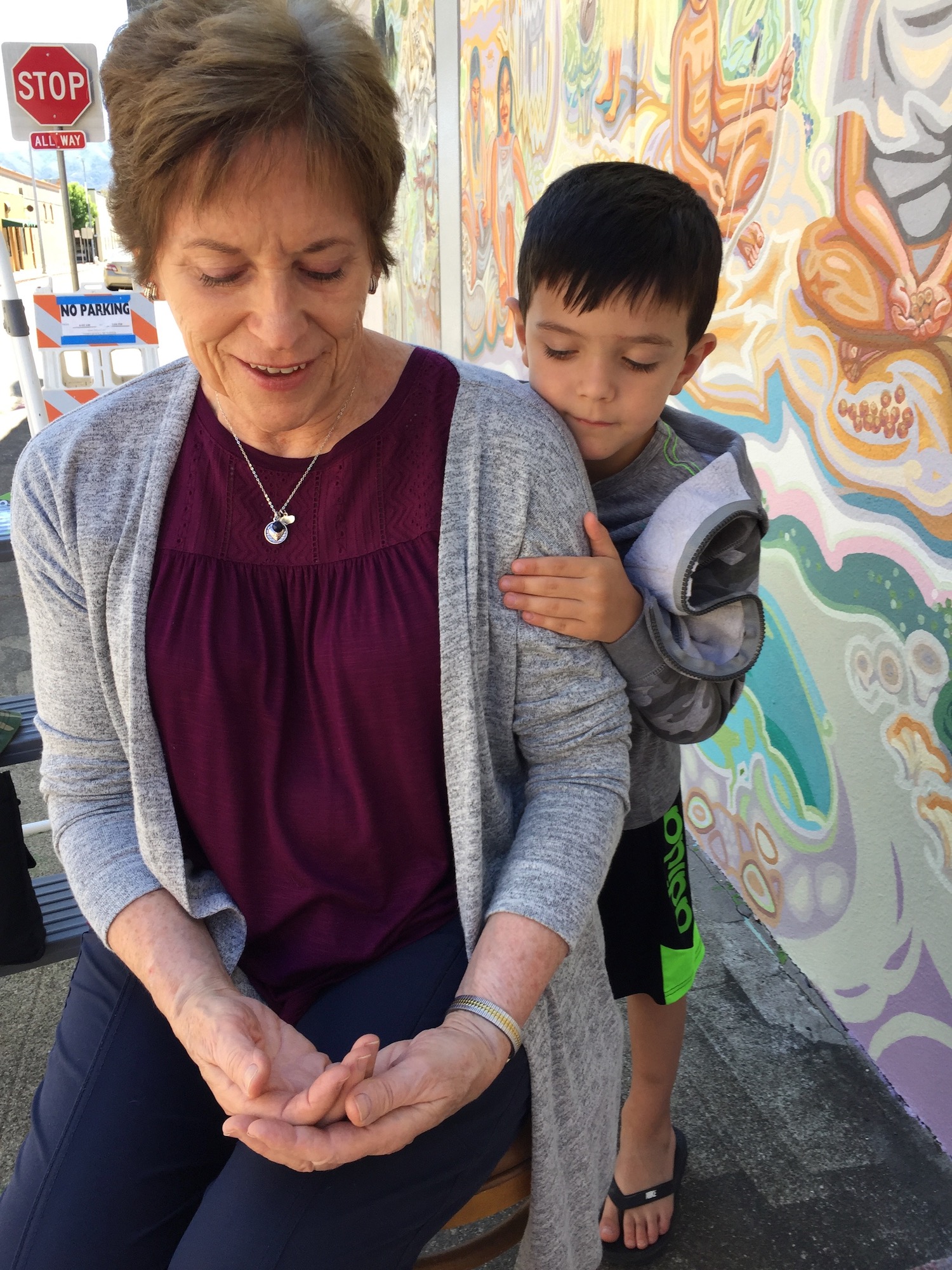



I used historic photos as much as possible but there is a problem: by the time photography was invented, Native people often dressed in western-style clothes, which cover a lot more than their historic pre-European contact garments. Working from descriptions and engravings or drawings from earlier times, I recreated clothing that is more true to the original. It helped to be a seamstress! And sometimes friends and I posed for parts of the subject matter.
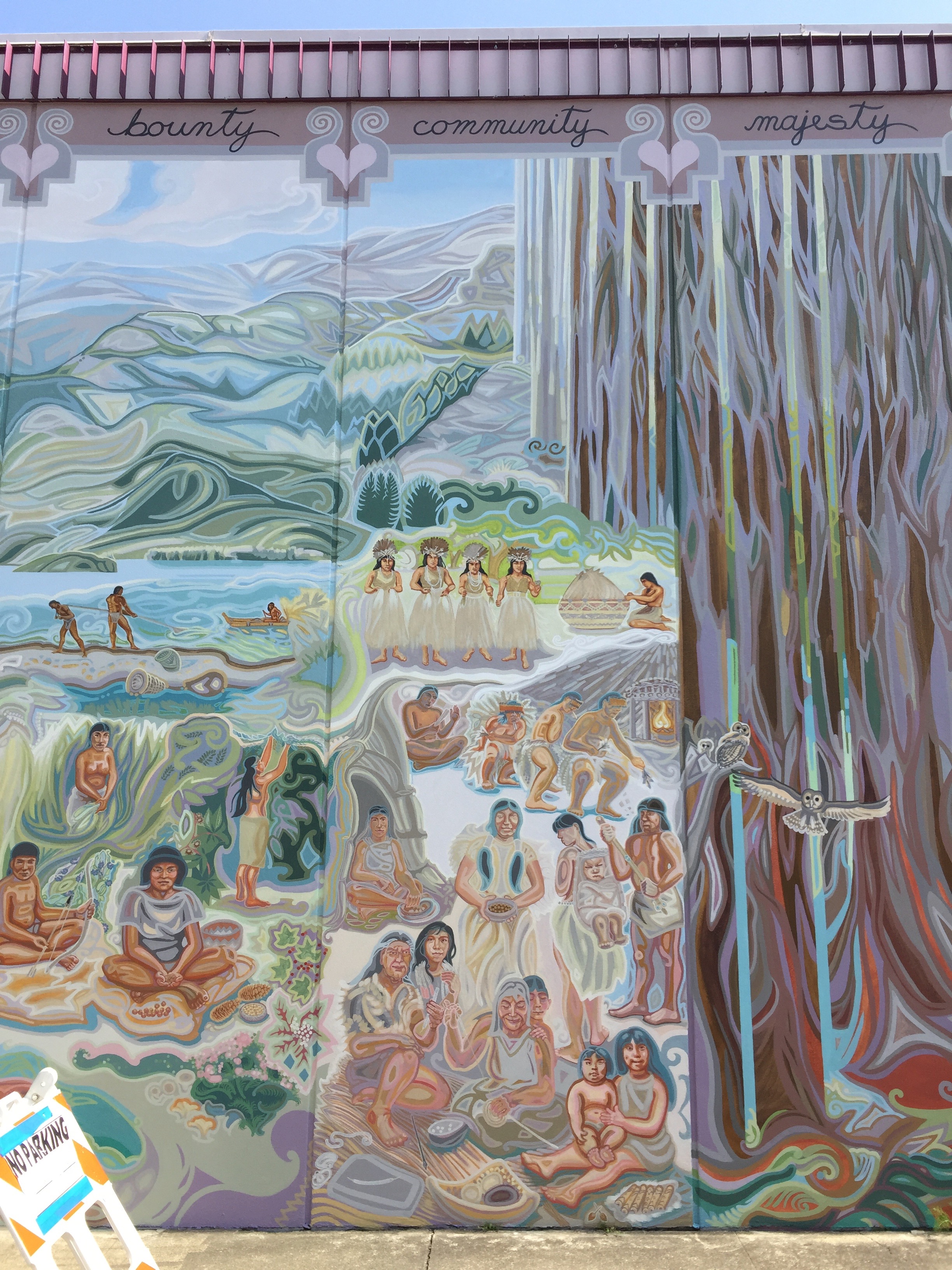
Next panel: